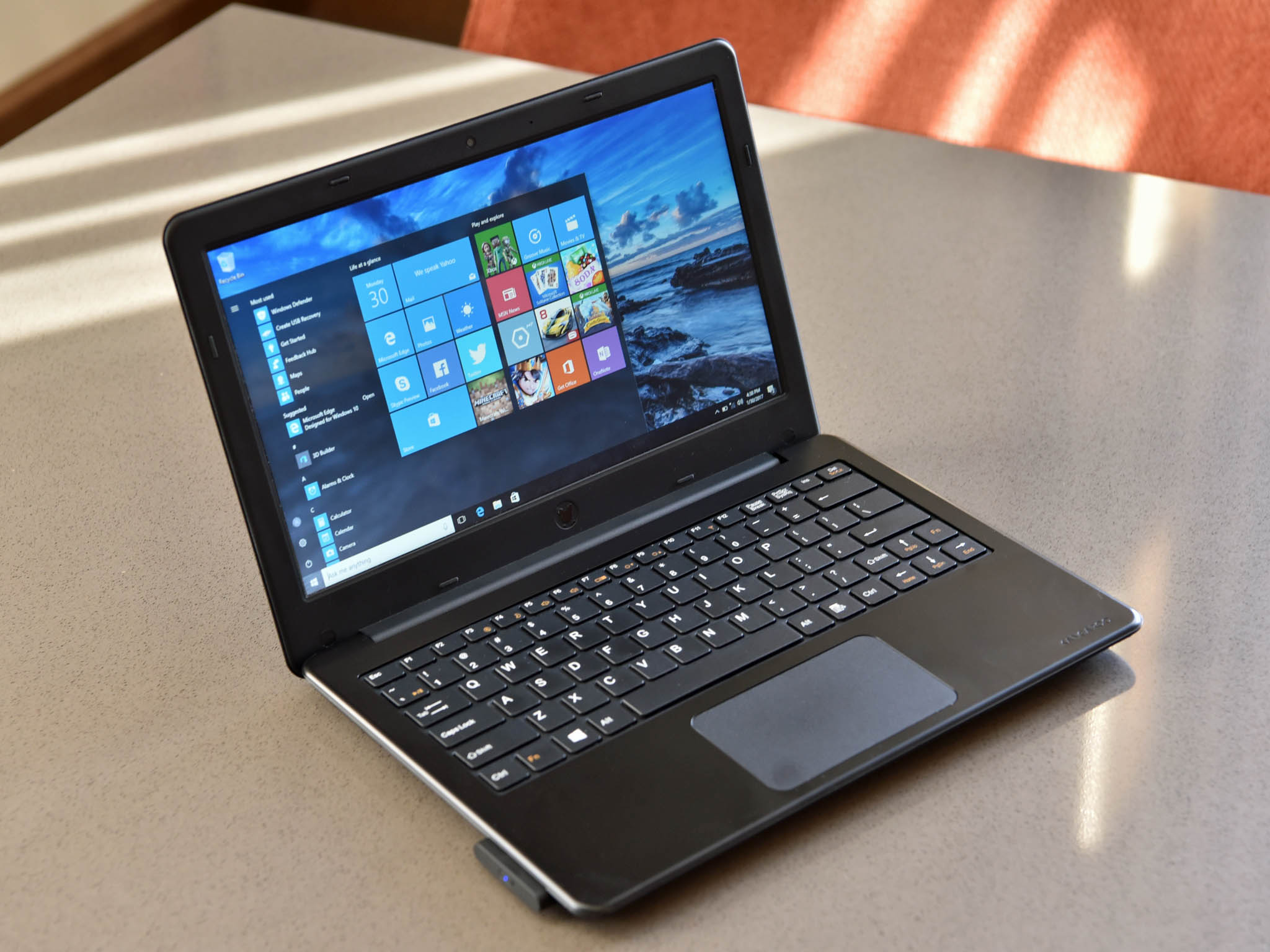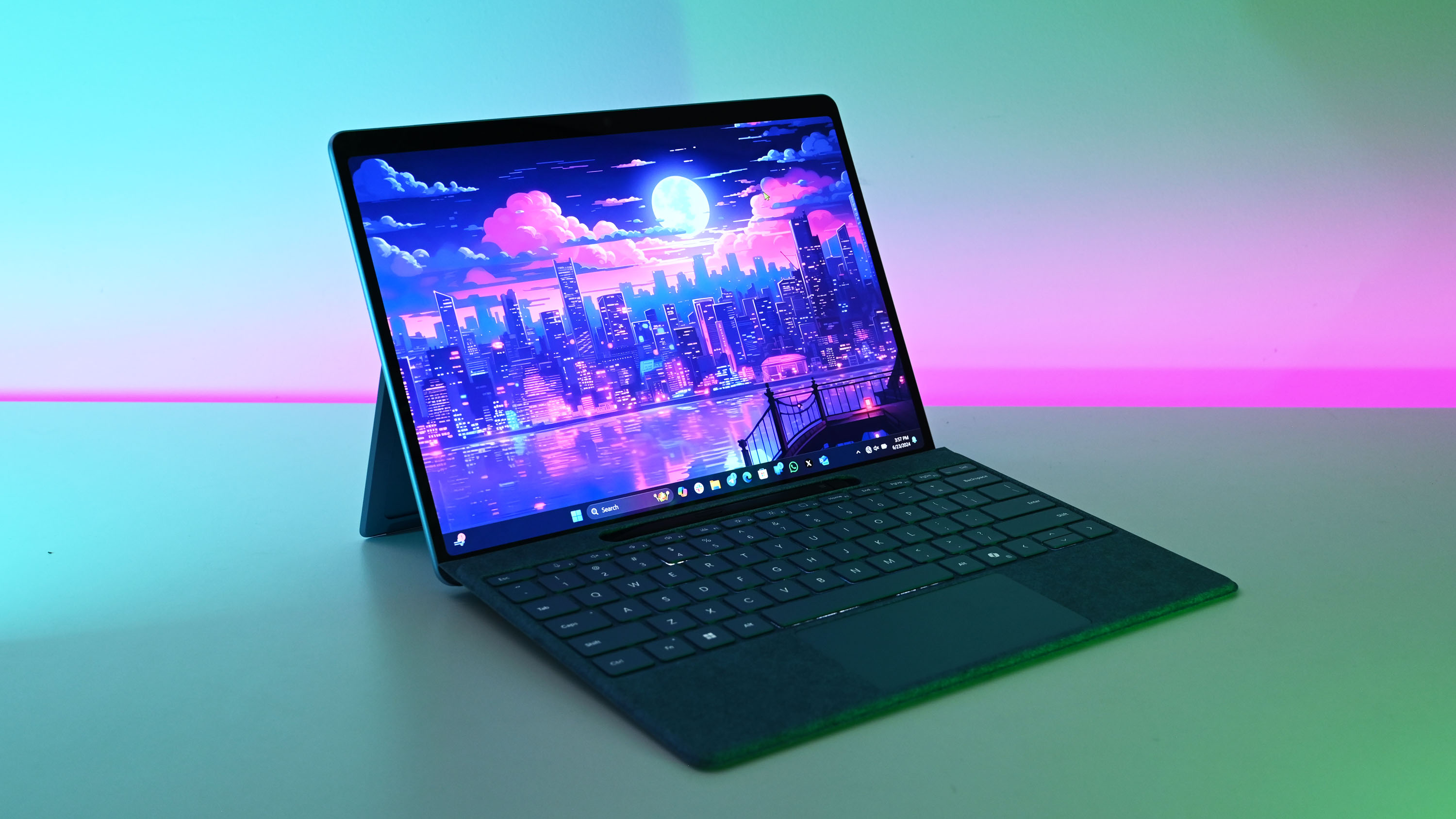Microsoft and its manufacturing partners are at a fascinating crossroads in 2017. Windows 10 continues to morph into all sorts of new hardware, but some of the ambitions don't quite equal a perfect user experience. Things like Continuum, HoloLens, even Windows 10 Mobile itself are all glimpses into the future not quite yet realized.
Kangaroo is one of those brave companies who is not afraid to try new things. We've reviewed their modular PC a few times including the Kangaroo Mobile Desktop Pro, and now they have the Kangaroo Notebook. The Notebook is a $300 laptop, but the "brains" of it lie with the two Mini stick PCs that let you swap out computers for various people.
While the concept and even pricing are reasonable, the goals of the project are being held back by Intel's lackluster Atom x5 budget chipset.
See Kangaroo Notebook at Newegg
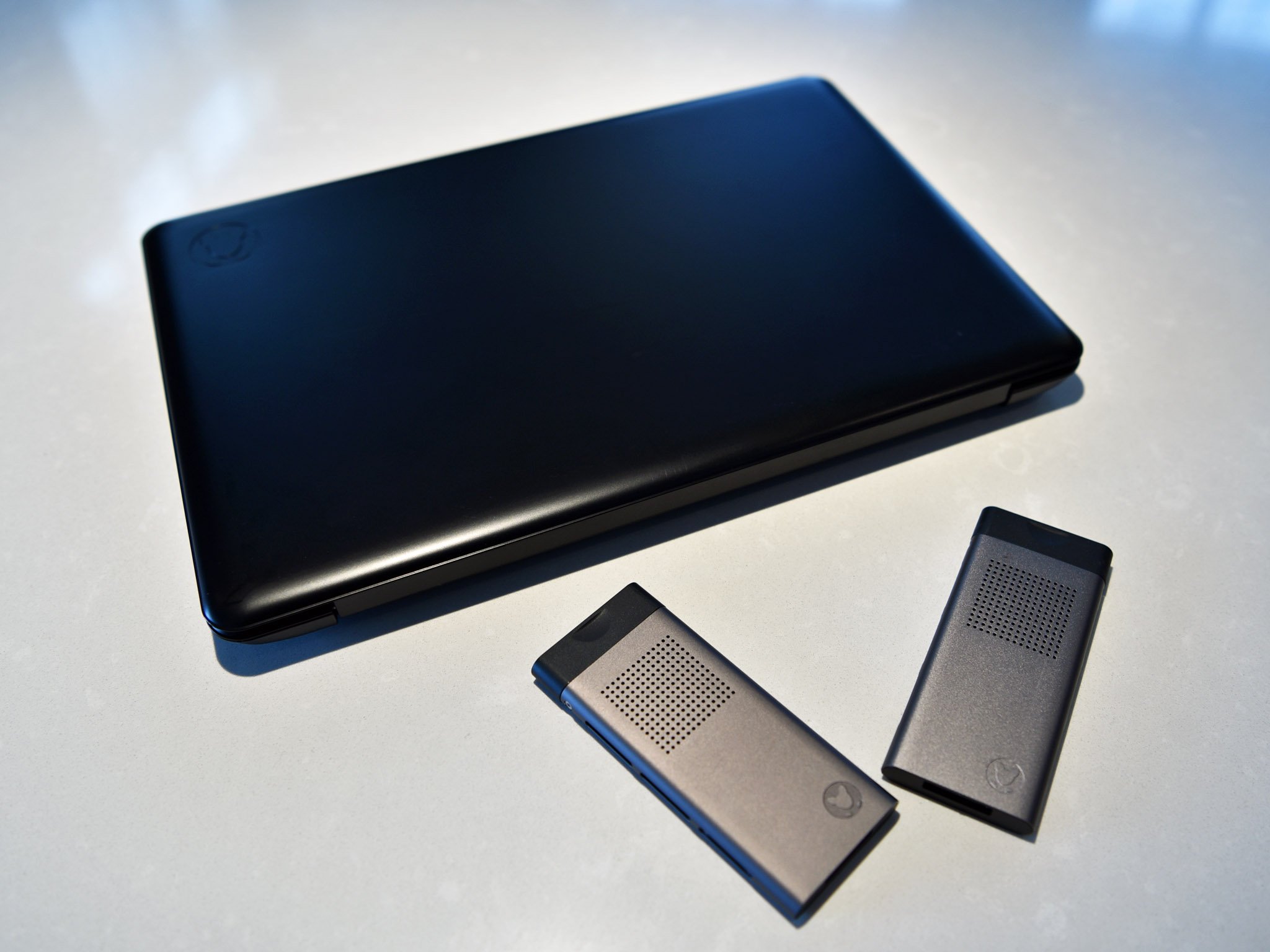
Budget price, budget hardware
Kangaroo Notebook specifications
Considering the Notebook runs for $300 you can imagine the hardware won't be cutting edge. Still, you do technically get a lot of bang for your buck as the Notebook comes with a dock (the laptop part) and two Mini PCs that each have their own Windows 10 Home 64-bit operating system.
| Category | Kangaroo Notebook + Mini PCs |
|---|---|
| Processor | Intel Atom x5-Z83501.44 GHz |
| Internal Storage | 32GB eMMC |
| Expansion | SD Card Reader in Notebook (SDSC, SDHC, and SDXC, 512 GB max)microSD TF Slot (256 GB max) - in Kangaroo Mini |
| RAM | 2GBLPDDR3 |
| Display | 11.6-inch 1366 x 768 non-touchAnti-Glare LED-Backlit Display |
| Graphics | Intel HD Graphics |
| Ports | 1 x USB 2.0 (Type-A)1 x USB 3.0 (Type-A)1 x Headphone/Microphone Combo Jack |
| Camera | 1 MP 720p HD Camera30fps at 1280x800 |
| Wireless | Intel Dual Band AC-3165Bluetooth 4.2 LE |
| Speaker | Integrated 1W Speaker and Microphone |
| Battery | 37 Whr / 5000 mAh Lithium-Ion Battery |
| Weight | 2.86 lbs (1.29 kg) |
| Dimensions | 11.41 x 7.71 x 0.78 in289.8 x 195.83 x 19.82 mm |
| Colors | Black |
The argument could be made that you can get a single laptop with better specifications than Kangaroo Notebook. While that is true, it does miss the point that technically speaking, you are getting two PCs with the Notebook. The reduced specifications for each Mini PC is not surprising at the $300 price point, but it's a valid point to raise when considering a purchase.
I'll take "Modularity" for a thousand, Alex.
Kangaroo Notebook defined
It's a fair question to ask what exactly is the Kangaroo Notebook and – just as importantly – who it is for (and why they would want it).
The theory behind the Notebook is that users can have this Mini PC with them always. It's a full PC with a Windows 10 OS license, your apps, Bluetooth, Wi-Fi and more. The keyboard and screen portion of the Notebook is just a dummy terminal. Users can swap out the Mini PCs and use the computer without compromising security and privacy.
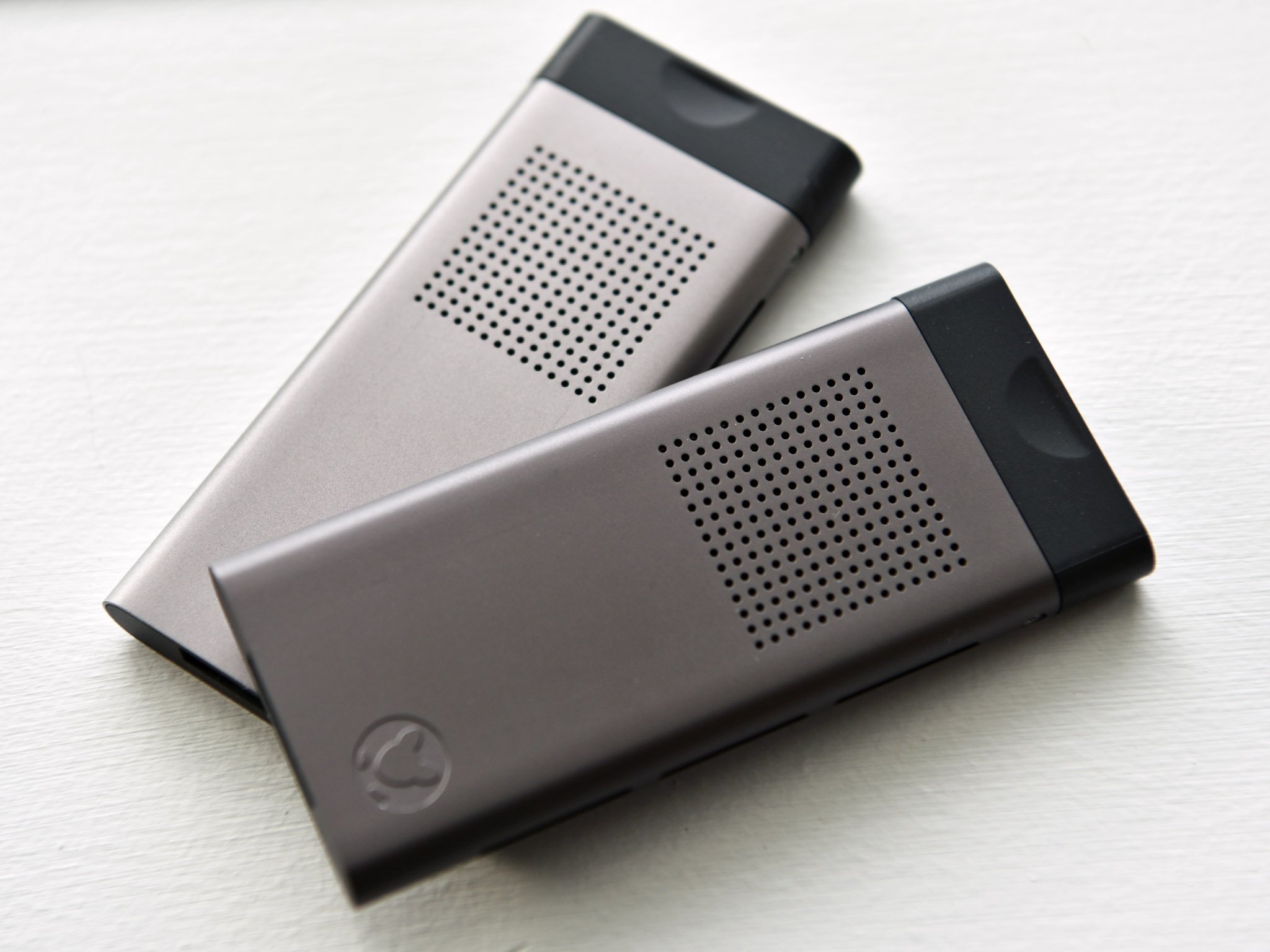
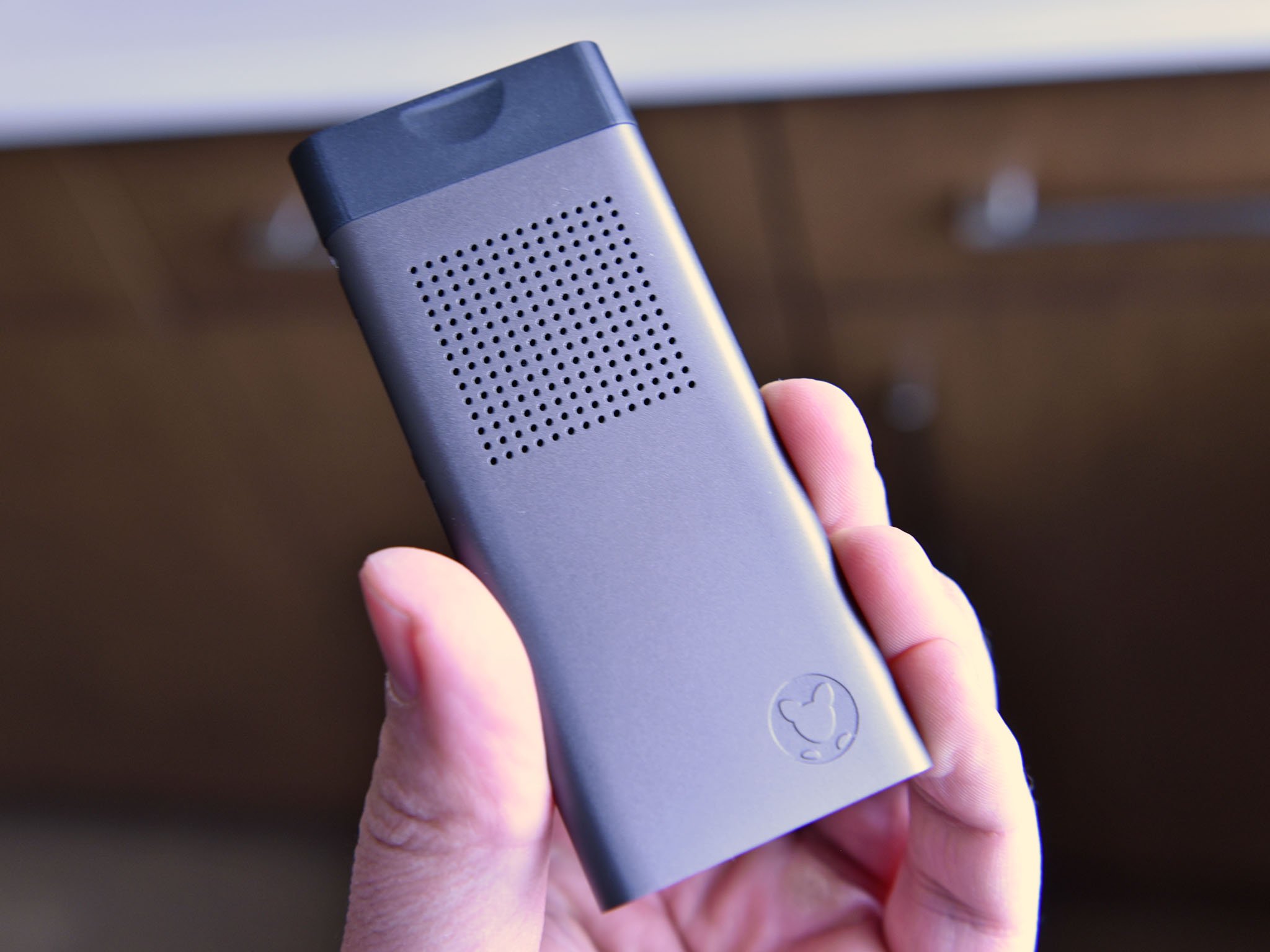
Since the $300 package comes with two Mini PCs in the box, the consumer is not obligated to throw down more money for another module. There's no obvious way to yet buy more Kangaroo Mini PCs for the Notebook if you want more than two users, though. That's technically an easy problem to solve, but for now it's unsolved.
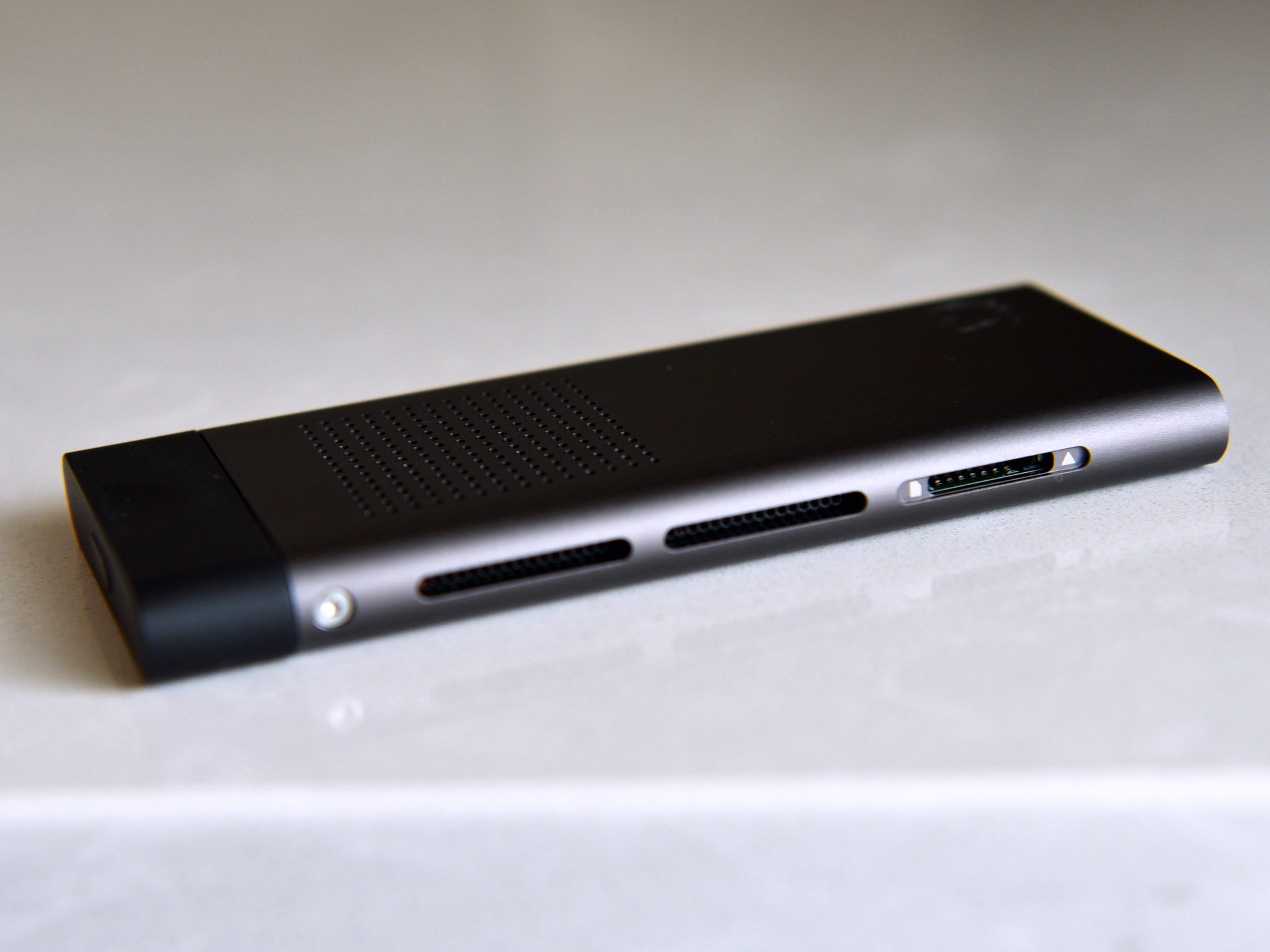
I could see families who want to share a laptop utilizing such a system. Likewise, someday, for companies where an employee may just carry around the PC in their pocket and can use multiple dummy terminals at home, work, or when traveling. A similar idea exists with the HP Elite x3, which can also act as a laptop or pseudo-PC.
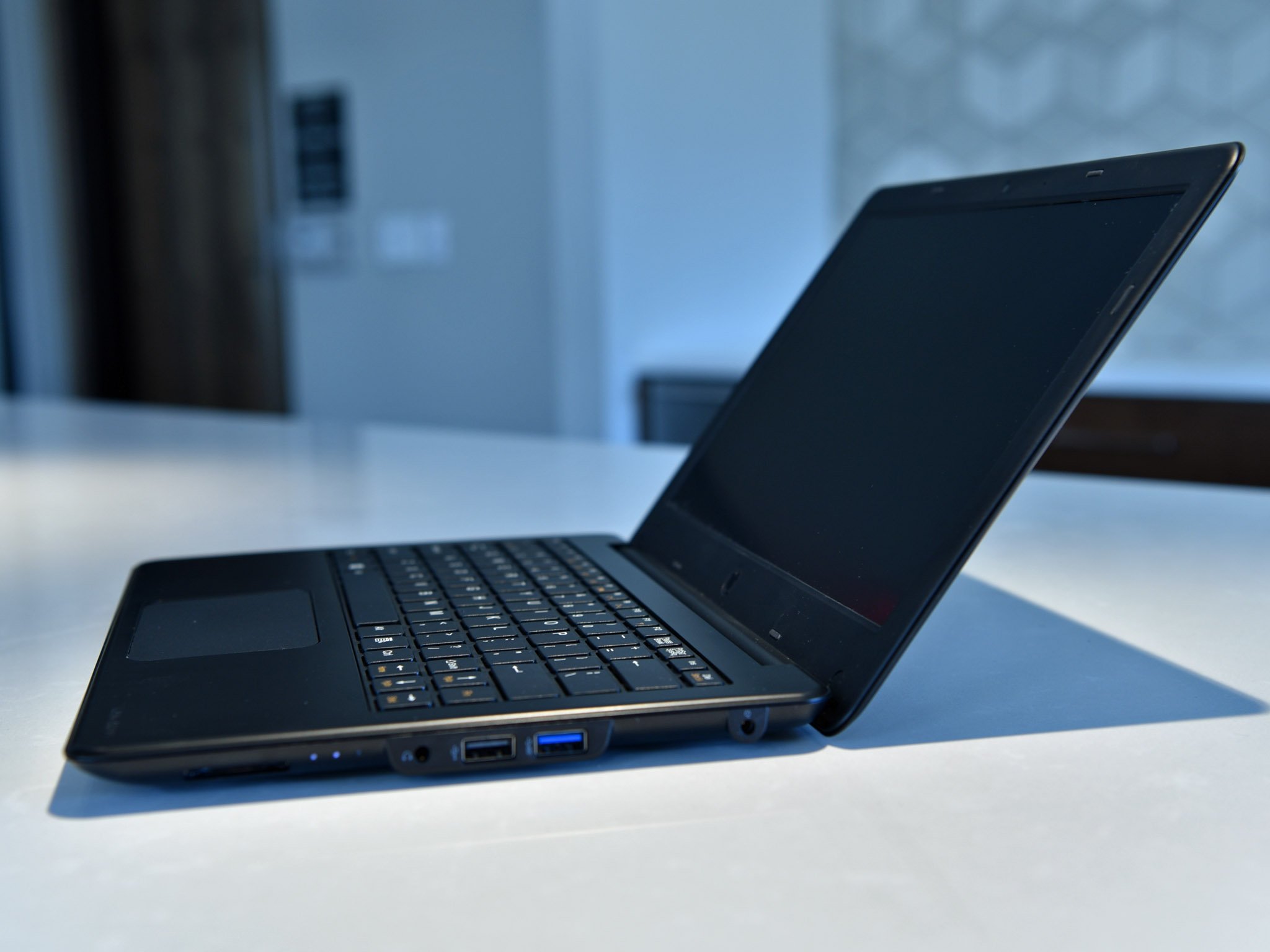
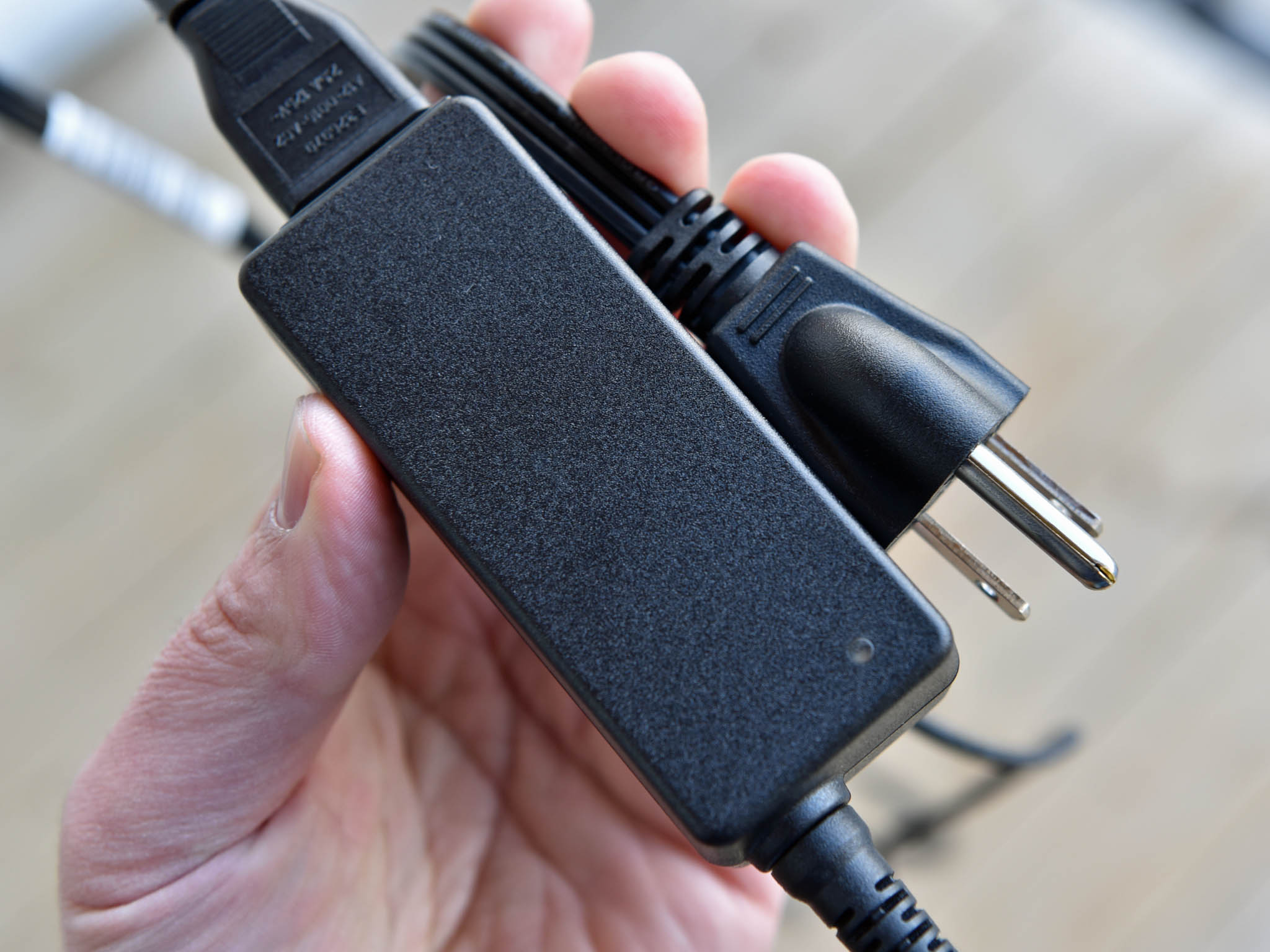
The issue is, for now, the Kangaroo Mini PC only works with the Kangaroo Notebook dock limiting its usefulness. There's currently no way to use it in a dummy desktop setup, TV, or any other peripheral that could utilize its "PC brains."
Slide in, slide out
Kangaroo Notebook functionality
In action, the Kangaroo Notebook is very simple. You take one of the Mini PC sticks and stick into the opening in the Notebook. To remove you should grab it by the end sticking out and just pull it. There is no eject button or latch — the stick is simply held in by friction and it takes some force and finesse to remove and insert.
At the business end of the Mini PC is a simple port that connects inside to the Notebook. There are also vents on the side of the Mini PC for cooling and even a microSD card slot. That microSD expansion is all but necessary; the paltry 32GB (20.5GB available) built into the Mini PC isn't enough.
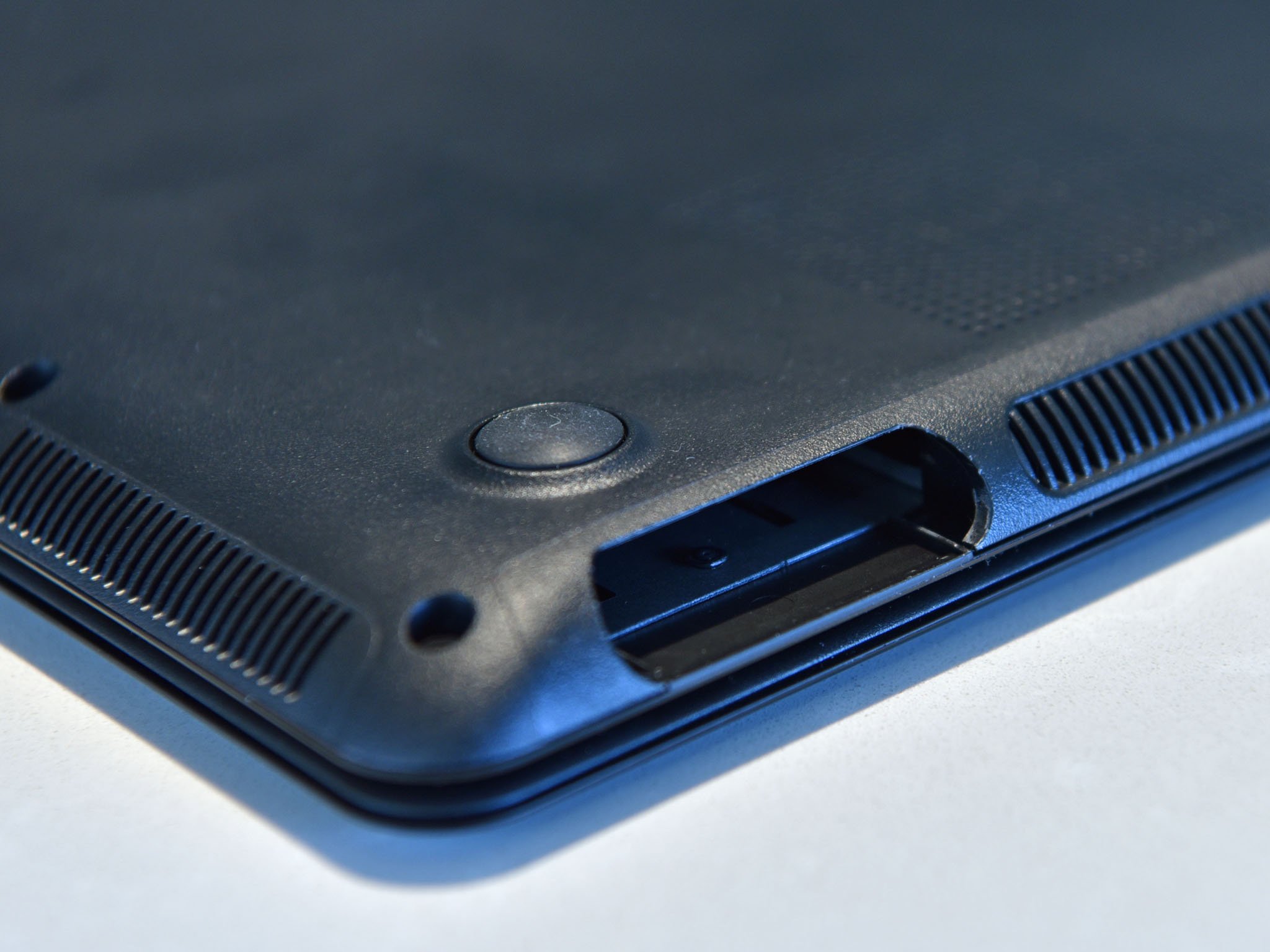
On the end that sticks out on the Notebook is a flush, tiny button that is used to power on the Notebook. It's a bit clumsy and not intuitive if you are used to the button being on the keyboard base like a proper laptop. I feel like you will need to eyeball the button to power it on and use a fingernail to press it. There's a blue LED to let you know the Mini PC is on and powering the Notebook. Closing the Notebook lid or hitting the power button puts the Notebook into Sleep mode like any regular laptop.
Since the Mini PCs do not have a battery if you pull them, you actually are killing the PC, and you'll lose any unsaved work. There is no way, as far as I know, to Hibernate and write the temporary file saves to memory to resume. So you'll want to shut it down every time you want to swap it out, and each swap of the Mini PCs is like booting up a computer aka 'cold start.'
Not a high-end experience
Kangaroo Notebook — IRL
Let's be clear that an Atom x5 processor with 2GB of RAM is not going to light the world on fire. Performance on Geekbench 4.0 and CrystalDiskMark fell to the bottom of our lists, as you would expect. The eMMC is some of the cheapest and slowest memory on the market and is usually reserved for smartphones.
Geekbench 4.0 Benchmarks (Higher is better)
| Device | Single Core | Dual Core |
|---|---|---|
| XPS 13 (9360) Core i7 | 4120 | 7829 |
| Spectre x360 Core i7 | 4100 | 7469 |
| Apple MBP 13 (2016; 28W) | 4027 | 7802 |
| Surface Book Core i7 | 3948 | 7415 |
| Kangaroo Notebook | 924 | 2357 |
That said, it's not a terrible experience once the Notebook is up and running. Windows Store apps open relatively quickly, and there's very little stutter. That lower resolution display (1366 x 768) doesn't require much in the way to push those pixels. While there is no comparison between an Atom x5 and a proper Intel Core processor, the Atom is "okay" enough for most light tasks or running Microsoft Office.
CrystalDiskMark Benchmarks (Higher is better; MB/s)
| Device | Read | Write |
|---|---|---|
| MacBook Pro 13 (2016) | 1549 | 1621 |
| Spectre x360 512 | 1332 | 589 |
| XPS 13 (9360) 256 | 1287 | 794 |
| Surface Book 512 | 782 | 573 |
| Kangaroo Notebook | 128 | 43 |
Issues begin to appear around the Synaptics trackpad, however. It's rather small, clicks when pressed down, and the sensitivity seems fine for this price range. However, Windows 10 only sees the trackpad as a mouse, which results in things like two-finger scroll and click-to-enter not working. That's a very bizarre experience as you need to use the arrow keys on the keyboard to navigate web pages. Likewise, you can tap to execute an action but clicking, oddly, does nothing. My hunch is InFocus (the company behind the Kangaroo line) would need to fork out some money for those drivers, and it just was not in the budget for this device.
The keyboard is usable, but not the greatest experience. I made a few more errors than usual due to its small size. I do like the square chicklet design, and there is space between the keys, which are all good choices. The key travel felt okay, and there is some flex when pushed down. The keys are not backlit, again no surprise for something in the price range.
The display is rather washed out but at 1366 x 768 and being anti-glare (matte) and non-touch it is what I expect in a $300 laptop these days. It's decent with okay viewing angles but being a non-IPS display, you will get best results from looking at it directly. It can get significantly bright, but it ends of washing out some of the colors.
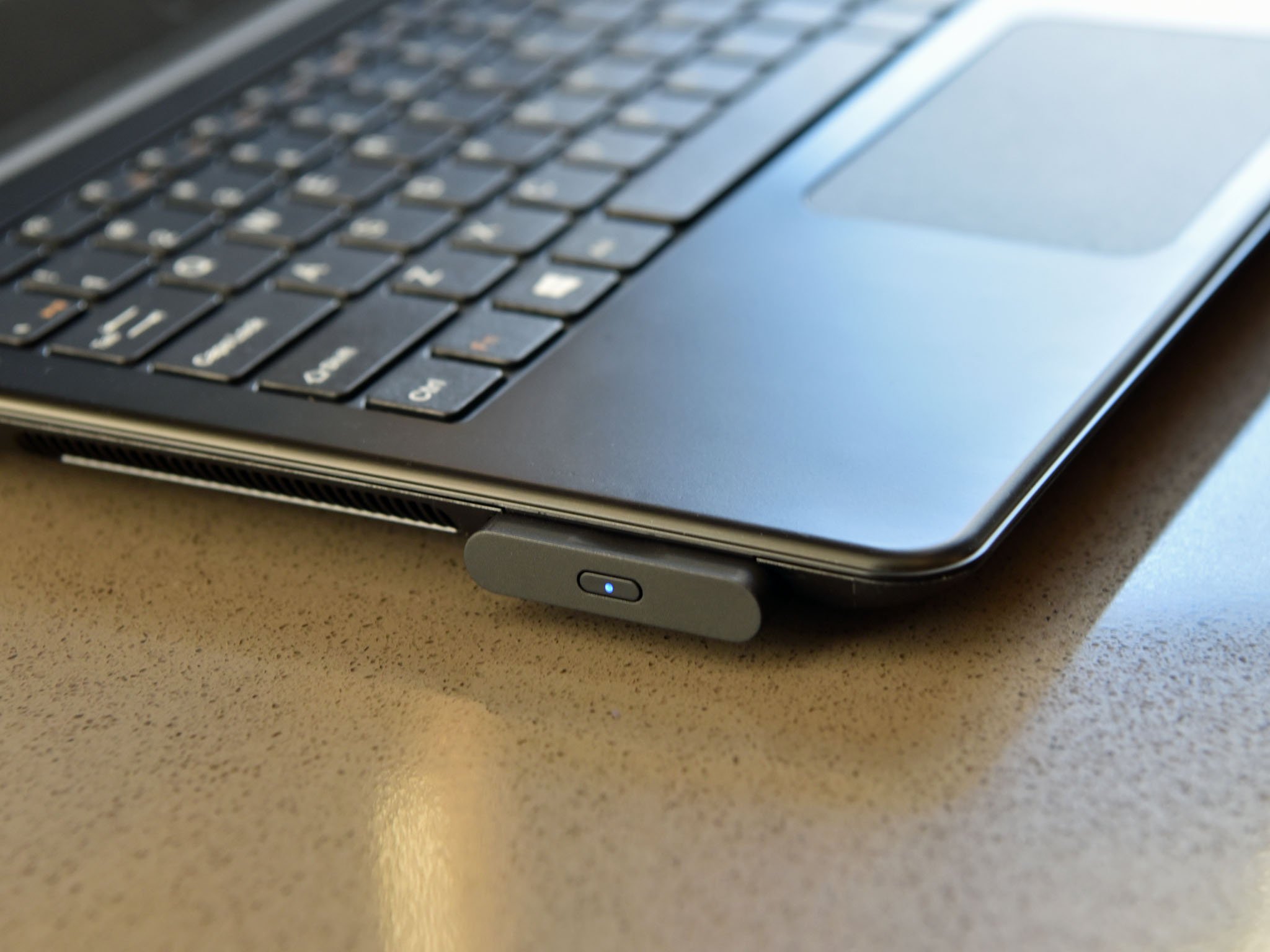
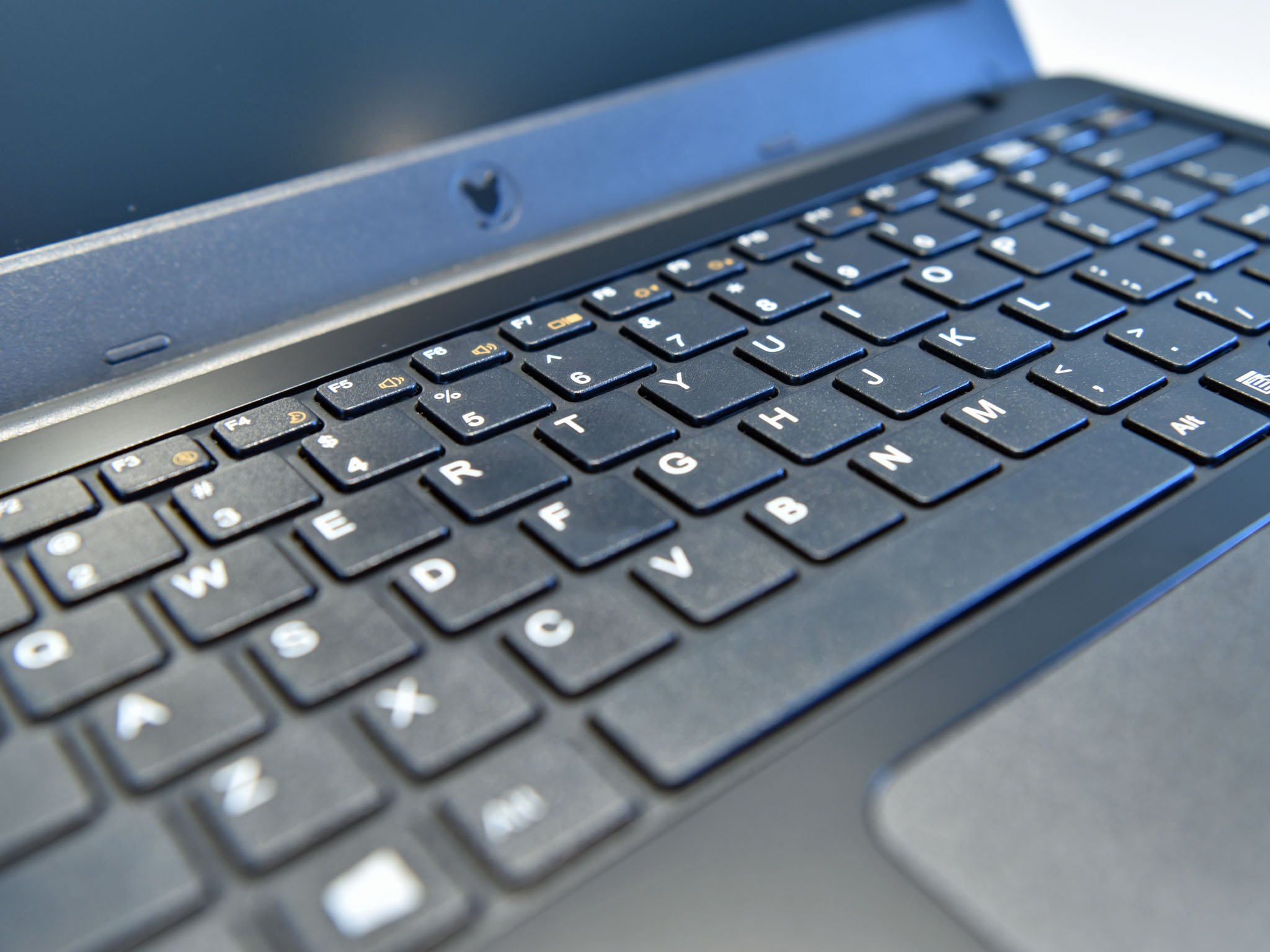
The included AC charger is rather larger for such an underpowered PC, with a three-pronged outlet and an old-school barrel-style plug instead of the newer USB-C (again, cutting licensing cuts costs). At least when charging, there are three LEDs on the side of the Notebook to give you an idea of how much charge is needed.
Weighing at 2.86 lbs (1.29 kg) the Kangaroo Notebook is not light for an 11-inch machine, but it's hardly substantial either. The overall build quality is decent and is surprisingly sturdy with little flex or creaks in the body. The semi-glossy black lid will pick up some fingerprints very quickly. The design is very pedestrian, almost generic, but it's not gaudy and is relatively clean, especially on the bottom.

For audio, there is a single 1W speaker to the right side of the device. It's downward firing, but at the edge, so it works well enough. Honestly, despite being mono, it's better than I thought and it can get quite loud.
At 2MP the front-facing camera is not going to win any contests, but it is surprisingly bright and well balanced. Again, like the speaker, it is better than I would have anticipated on such a device.
Overall, the Kangaroo Notebook is a decent-feeling $300 laptop. The difference is while some $400 laptops have significantly better hardware, the Kangaroo has to do double duty with two Mini PCs for that $300 price tag, reducing the value compared to a single $400 PC. That difference is noticed in things like the 2GB of RAM, which is very low in 2017, the slow eMMC memory, and the 1.44GHz Atom x5. Nonetheless, it's surprising that for $300 you are getting two computers. They just happen to share one keyboard and display.
We're almost there
Kangaroo Notebook: The Bottom Line
The Kangaroo Notebook is an odd recommendation. For just a bit more than its $300 price you can pick up an HP Notebook 15 and get a much bigger, better display with a more performant Core i3 processor and 8GB of RAM. For $100 less you can grab the Lenovo Ideapad 110 and for an even $300 there the ASUS EeeBook — both technically far more capable than the Kangaroo Notebook.
But that comparison is unfair, as the Kangaroo is giving you in effect two computers for $300. It would seem easier to grab an inexpensive traditional laptop and just use a multiple user accounts for family members. That's how I see most people looking at the value proposition between getting the Kangaroo Notebook versus some like the HP Notebook 15 or ASUS EeeBook.
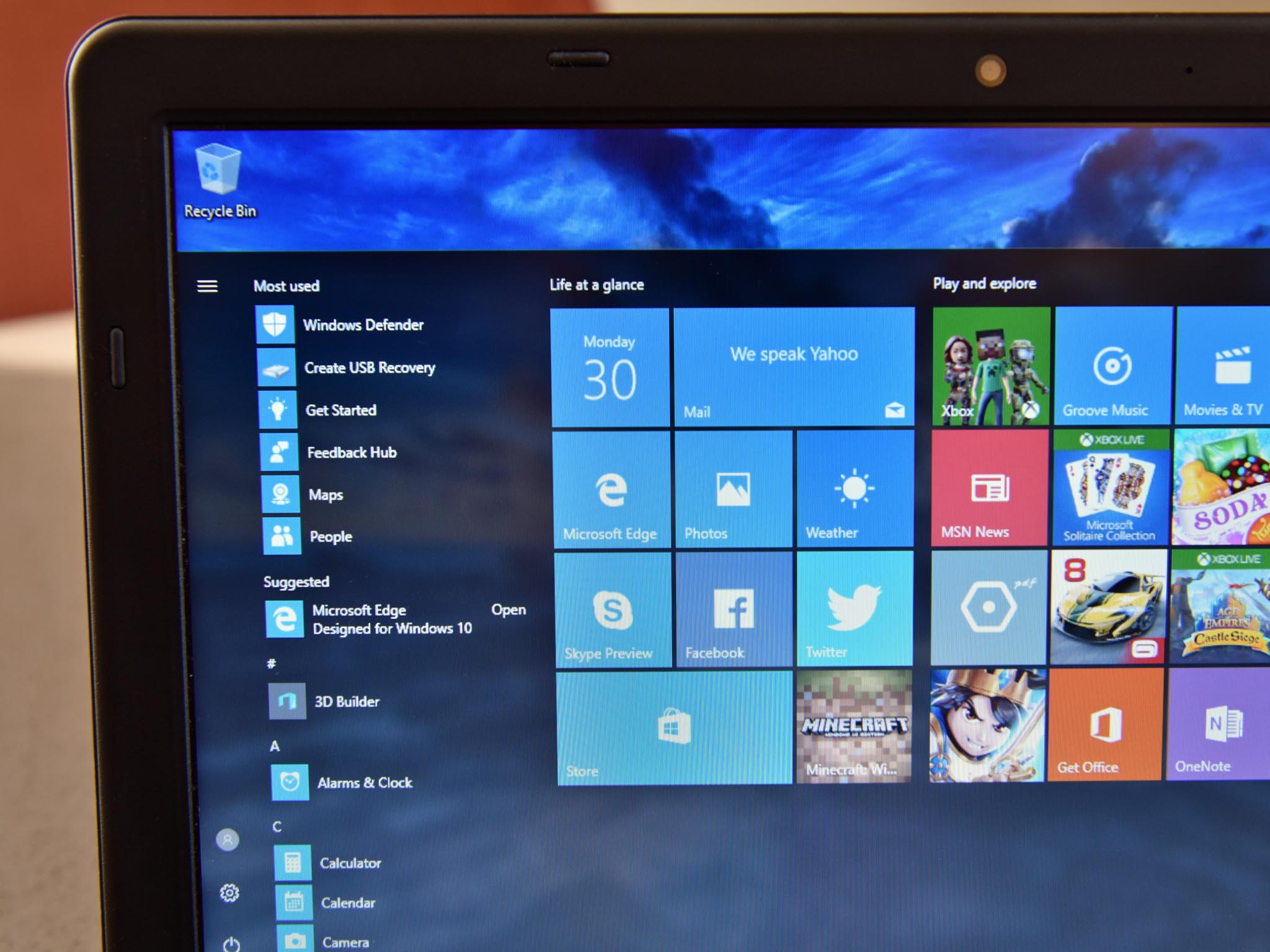
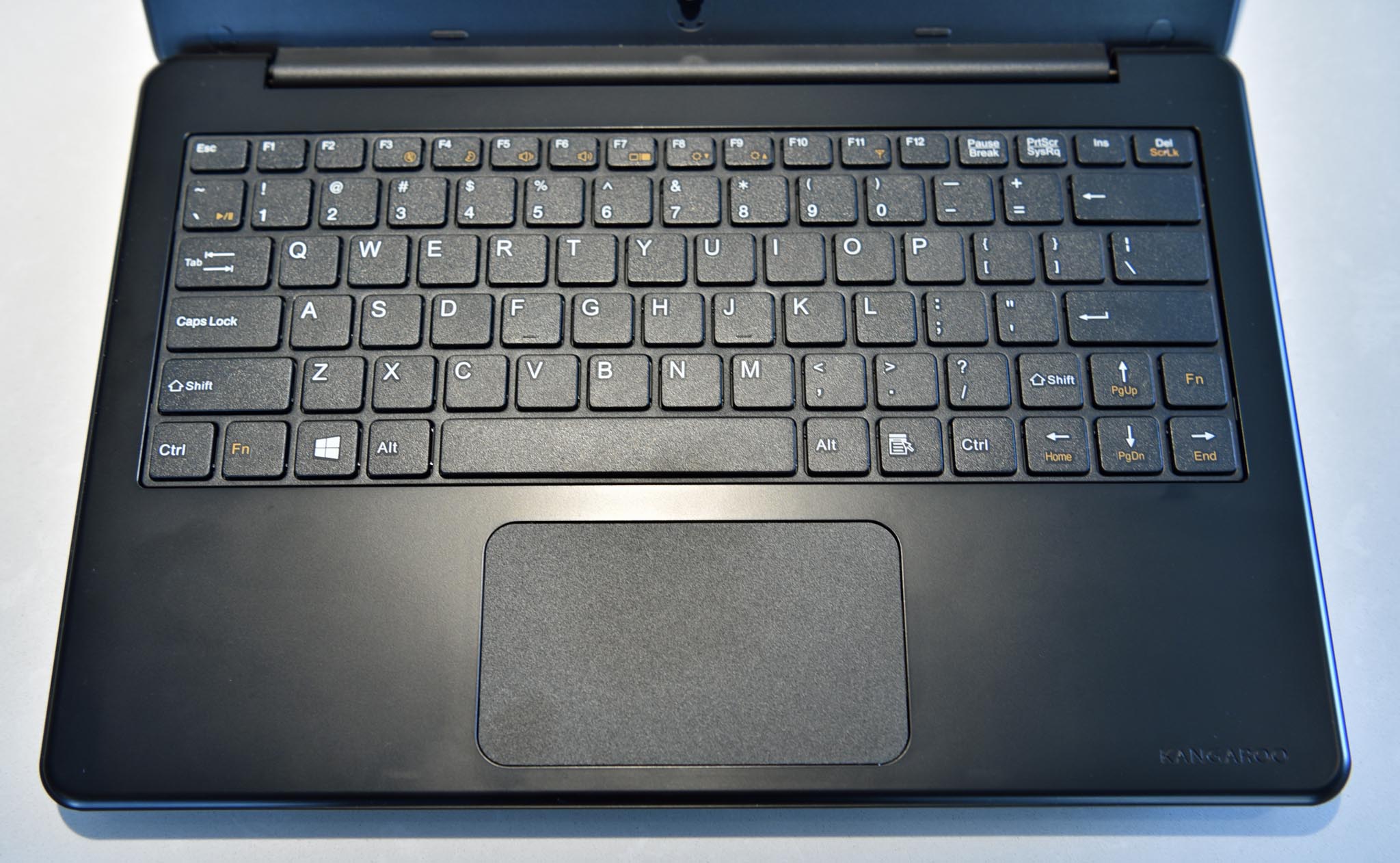
I appreciate what InFocus is trying to do with the Kangaroo Notebook. I think modular computing is a very exciting and interesting development in the world of PCs and I applaud InFocus for pushing the genre forward. However, without being able to buy more Mini-PC sticks and the inability to use them anywhere but with the Notebook (instead of in addition to a desktop or tablet setup, or something else) the proposition is a hard one to sell. At least for now.
And to be blunt, Intel's Atom line of processors is subpar. They exist for their cost: $34 per chip. That contrasts with the beefier Core processor that go into the hundreds of dollars. Even the Celeron line is $107 for the processor. Intel needs something that is low cost but doesn't present such a wide gap in performance.
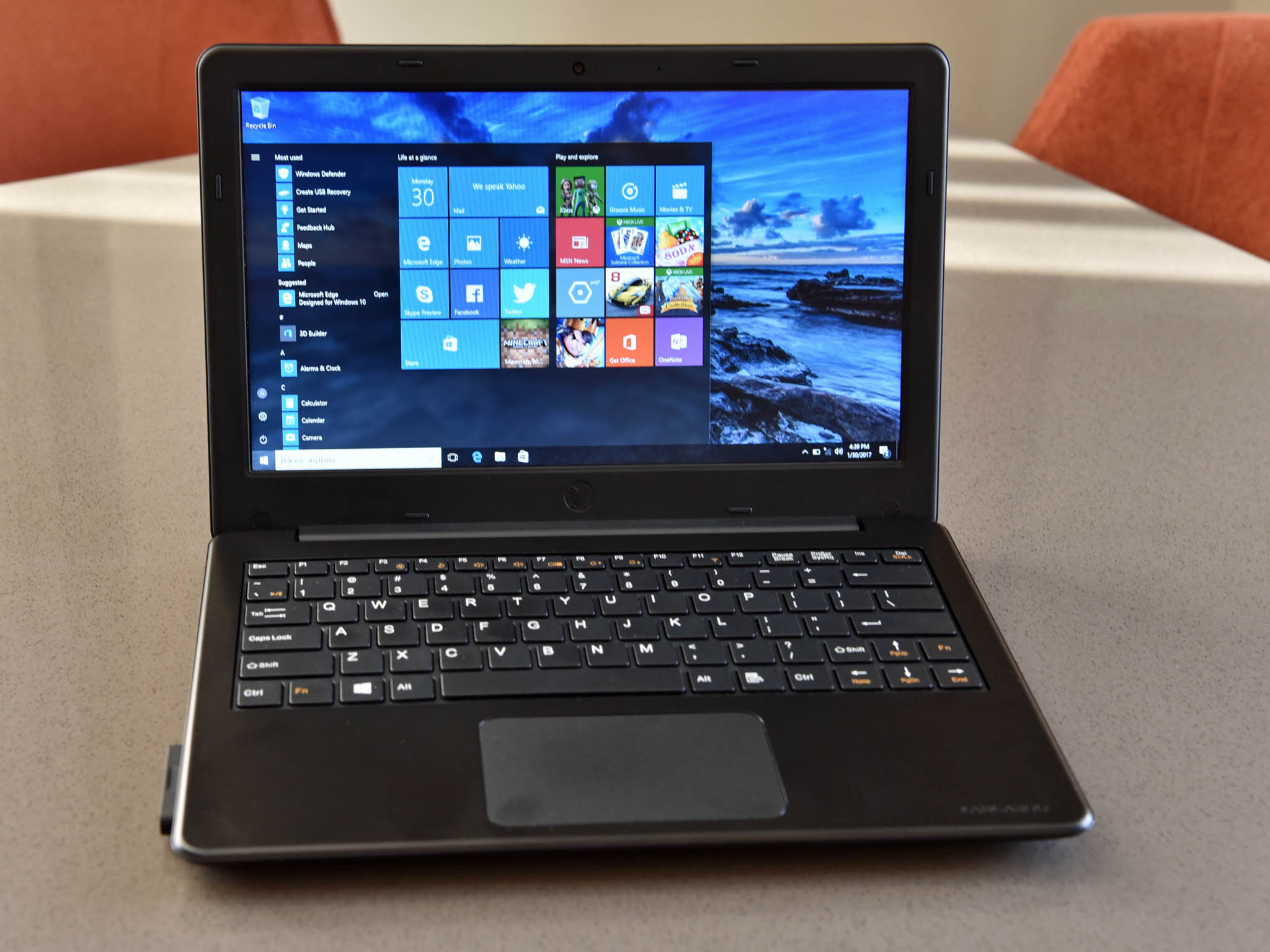
Where things get interesting for InFocus and their Kangaroo line is the forthcoming Windows 10 on ARM ecosystem. With ARM, their vision of modular computing begins to make much more sense with added 4G LTE support, built-in graphics, support for cameras, and more. Not only are such system-on-chip (SoC) solutions smaller, but they hit a price in-between Intel Atom and Celeron.
See Kangaroo Notebook at Newegg
Unless you need the modularity that the Kangaroo Notebook offers, I recommend skipping it for now. But watch this space and InFocus for future products. I think their vision is ahead of current technology, but all of that may change later this year with ARM and the continued development of Windows 10.

Daniel Rubino is the Editor-in-chief of Windows Central. He is also the head reviewer, podcast co-host, and analyst. He has been covering Microsoft since 2007 when this site was called WMExperts (and later Windows Phone Central). His interests include Windows, laptops, next-gen computing, and wearable tech. He has reviewed laptops for over 10 years and is particularly fond of 2-in-1 convertibles, Arm64 processors, new form factors, and thin-and-light PCs. Before all this tech stuff, he worked on a Ph.D. in linguistics, performed polysomnographs in NYC, and was a motion-picture operator for 17 years.
